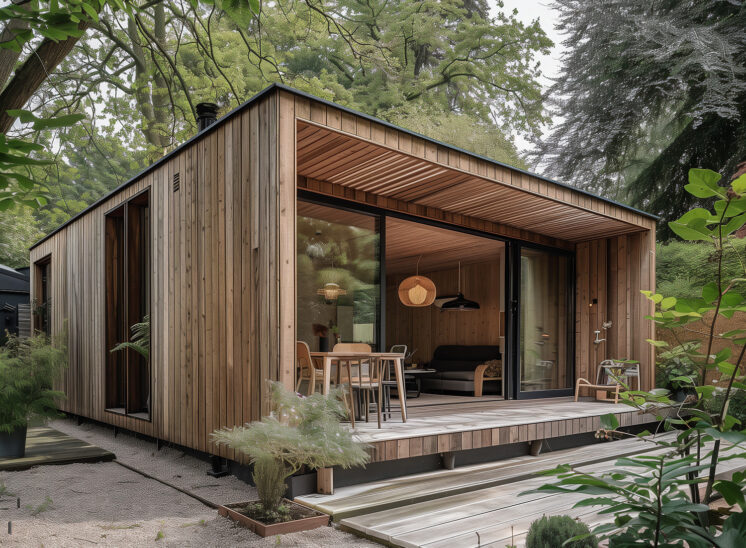
Understanding the Legal Framework for Mobile Homes in UK Planning Law
Mobile homes have become increasingly popular in the UK, not only as holiday accommodations but also as temporary dwellings during self-build projects or as annexes for extended family members. However, understanding their legal status within the framework of UK planning law is crucial for homeowners, developers, and planning authorities alike.
Mobile Homes and Planning Permission
One of the most common questions is whether a mobile home requires planning permission. The answer largely depends on the use and permanence of the structure. In the landmark case of Measor v. Secretary of State for the Environment, Transport and the Regions (1998), it was established that mobile homes are generally not classified as buildings due to their lack of permanence and attachment to the land. This case set a precedent that is still relevant today.
However, it’s important to note that while mobile homes might not be considered buildings, this does not automatically exempt them from planning regulations. The location, use, and connection to services are all factors that can influence whether planning permission is required. For instance, if a mobile home is used as a separate, independent residence rather than as ancillary accommodation to the main dwelling, it is likely that planning permission would be necessary.
Key Legal Considerations
1.Permanence and Attachment: The criteria of permanence and attachment are pivotal in determining whether a mobile home is classified as a building. A mobile home that can be easily moved and is not permanently affixed to the land is less likely to be considered a building under planning law.
2.Use of the Mobile Home: If a mobile home is used as a primary residence or in a way that constitutes a change in the use of the land, it may be subject to planning control. For example, using a twin unit mobile home as a long-term dwelling independent of the main house would likely require planning permission.
3.Location: The location of the mobile home also plays a critical role. If placed within the curtilage of a dwelling and used as ancillary accommodation (e.g., as a granny annex), it may not require planning permission. However, if the mobile home is placed on agricultural land or outside the residential boundary, planning permission would typically be necessary.
Recent Developments and Ongoing Considerations
The main principles established in the Measor case have been reaffirmed in subsequent cases, including Massingham v Secretary of State for Local Government and the Regions (2002), where it was reiterated that mobile homes generally do not meet the criteria to be classified as buildings. This ongoing legal stance highlights the importance of considering the specific circumstances of each situation when assessing the need for planning permission.
In recent years, there has been an increase in the use of mobile homes as temporary accommodation during self-build projects. This trend underscores the importance of understanding planning regulations to avoid potential legal challenges. Homeowners and developers should always consult with local planning authorities to ensure compliance with current regulations.
Navigating the complexities of planning law concerning mobile homes requires careful consideration of various factors, including permanence, use, and location. While mobile homes are generally not classified as buildings, their use and placement can trigger planning requirements. As the legal landscape continues to evolve, staying informed about the latest regulations and case law is essential for anyone considering the use of a mobile home in the UK.



Understanding the Legal Status of Mobile Homes in Planning Law
In the realm of planning law, the status of mobile homes and caravans has long been a subject of debate, particularly concerning whether they should be classified as buildings. This issue was significantly clarified in 1998 with the landmark case of Measor v. Secretary of State for the Environment, Transport and the Regions. This case, heard in the Queen’s Bench Division of the High Court, has become a cornerstone in understanding how mobile homes are treated under the Town and Country Planning Act 1990.
The Measor Case and Its Impact
The Measor case centred on the key considerations of permanence and attachment when determining whether a mobile home constitutes a building. The judgement in this case provided a clear directive that, in general, mobile homes should not be treated as buildings. The reasoning was that mobile caravans typically lack the degree of permanence and attachment that characterises a building.
The court did, however, express caution against making an absolute statement that a mobile home could never be classified as a building. This nuanced approach ensures that each case is considered on its specific facts, particularly regarding the level of permanence and physical attachment of the mobile home to the land.
Further Developments in Case Law
The principles established in the Measor case have been reaffirmed in subsequent legal cases. For example, in the 2002 case of Massingham v Secretary of State for Local Government and the Regions, Mr Justice Forbes reiterated that mobile homes generally fail the tests of permanence and attachment necessary to be considered buildings under planning law.
In the Massingham case, even though the mobile home was being used as a second home and was supported by concrete slabs, it was determined that it did not constitute a building. This was despite the mobile home having some degree of permanence, such as being connected to mains services and having its wheels supported by blocks.
Implications for Planning and Development
These rulings have a significant implications for planning and development, particularly for individuals or entities considering the placement of mobile homes on land. It is crucial to understand that while mobile homes may serve as temporary dwellings or additional accommodation, they are generally not classified as buildings for planning purposes. This distinction can influence whether planning permission is required and how such structures are regulated.
For developers, homeowners, and legal practitioners, these cases underscore the importance of considering the specific circumstances of each case, especially concerning how mobile homes are situated and used on a given site.
The legal status of mobile homes under planning law has been shaped by significant court rulings, particularly the Measor and Massingham cases. These cases highlight that while mobile homes may have certain features of permanence, they generally do not meet the criteria to be classified as buildings. Understanding these nuances is essential for anyone involved in planning and development involving mobile homes.









